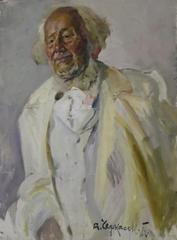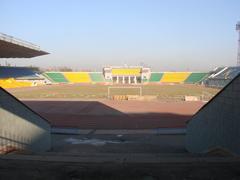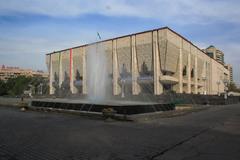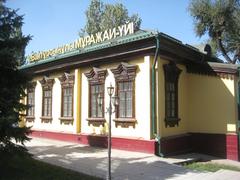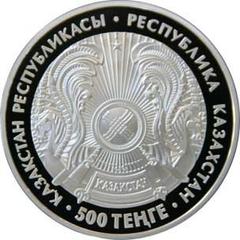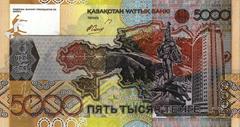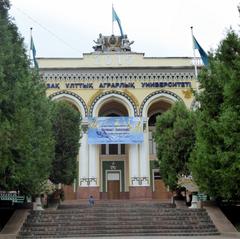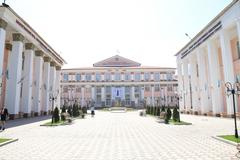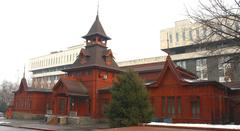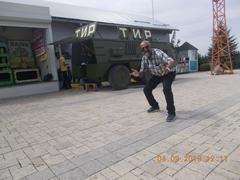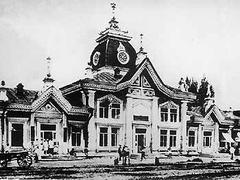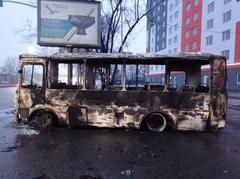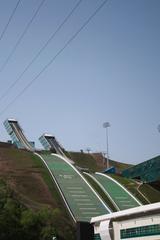
Our Lady of Kazan Church, Almaty: Visiting Hours, Tickets, History, and Travel Guide
Date: 04/07/2025
Introduction
Nestled in the heart of Almaty, Kazakhstan’s cultural capital, the Our Lady of Kazan Church stands as a vibrant emblem of Russian Orthodox heritage and a testament to the enduring faith and cultural diversity of the region. This historic church preserves centuries-old traditions tied to the revered Kazan Icon of the Mother of God—a miraculous symbol dating back to the 13th century that played a pivotal role in Russian history. Established during the 19th-century expansion of Russian Orthodoxy into Central Asia, the church survived major natural disasters and periods of political upheaval, ultimately emerging in the 21st century as a restored architectural and religious landmark.
Today, Our Lady of Kazan Church welcomes pilgrims, history enthusiasts, and travelers, offering free admission and ensuring accessibility for all. Its rich architectural details, liturgical art, and deep historical connections make it a cornerstone among Almaty’s historical sites. This guide provides detailed insight into the church’s history, significance, visiting hours, ticket policies, and essential travel tips—empowering you to plan a respectful and memorable visit to one of Kazakhstan’s most treasured religious monuments.
For further details, see the Marian Encyclopedia, St. Sophia Cathedral (Almaty) Wikipedia page, and the Almaty City Tourism Official Website.
Table of Contents
- Historical Background
- Visitor Information
- Travel Tips
- Nearby Attractions
- FAQs
- Visuals and Media
- References
- Conclusion & Call to Action
Historical Background
Origins of the Our Lady of Kazan Icon
The Our Lady of Kazan Icon is one of the most venerated symbols in Russian Orthodoxy. According to tradition, it dates back to the 13th century, with its legendary rediscovery in 1579 after a vision led a young girl to recover it from beneath the ashes of a burned house in Kazan (Marian Encyclopedia). The icon quickly became associated with miraculous healings and protection, symbolizing hope and unity for the Russian people. Over the centuries, it was credited with helping secure pivotal military victories and became a national emblem.
Establishment in Almaty
The Russian Empire’s expansion into Central Asia in the 19th century brought Orthodox Christianity to what is now Almaty (then Verny). The first Orthodox prayer house opened in 1856, and the Kazan Church was formally established in 1864, serving Russian settlers, military personnel, and the local community (St. Sophia Cathedral (Almaty) Wikipedia). The dedication of the church to the Kazan Icon reflected both the settlers’ spiritual needs and the icon’s symbolic importance as a protector.
Architectural Evolution
The original church was a modest wooden structure, typical of Russian ecclesiastical architecture on the frontier. As Almaty grew, a more prominent brick church was constructed in 1871, complete with a bell tower and a wooden dome. The church complex also included a necropolis for the city’s first bishops and served as a spiritual and social hub for the Orthodox community.
Survival and Restoration
The devastating Vernensk earthquake of 1887 destroyed much of Almaty, including the church, leading to temporary worship spaces and eventual rebuilding using local fir wood for better resilience. The Soviet era brought closures, neglect, and the repurposing of religious sites. Yet, the community’s spirit endured, and restoration efforts in the early 21st century culminated in the church’s reconsecration in 2007 (St. Sophia Cathedral (Almaty) Wikipedia). In 2022, further restoration revived intricate architectural details and revealed the unique underground Cave Church, the only one of its kind in Kazakhstan (audio-tours.cyaontheroad.com).
Visitor Information
Visiting Hours
- The church is open daily from 9:00 AM to 6:00 PM. It is advisable to check ahead for any special services or temporary closures during religious holidays.
Tickets and Admission
- Admission: Free of charge for all visitors. Donations are appreciated and help support the parish and maintenance.
- Guided Tours: May require advance booking, especially for groups or during special events.
Accessibility
- The church is wheelchair accessible, with ramps and accessible restrooms. Staff can assist visitors with special needs.
Guided Tours and Special Events
- Guided tours are available by prior arrangement, providing in-depth information about the church’s history, iconography, and architecture.
- Major feast days (July 21, November 4) feature special liturgies and processions, attracting larger crowds and offering unique cultural experiences.
Travel Tips
- Dress Code: Modest attire is required. Women should cover their heads; men should avoid shorts and sleeveless shirts.
- Language: Russian and Kazakh are spoken; English is limited. Basic Russian phrases or translation apps are helpful.
- Photography: Permitted outside and, with permission, inside (especially outside of service times).
- Cash: Bring small denominations of Kazakhstani tenge for donations and souvenirs.
- Transport: Centrally located; accessible by metro, bus, taxi, or on foot from major landmarks.
- Best Time to Visit: Spring (April–June) and autumn (September–October) for mild weather and fewer crowds. Early mornings are quieter before services.
Nearby Attractions
- Panfilov Park & Zenkov Cathedral: A stunning wooden Orthodox church and city park.
- Central State Museum of Kazakhstan: Offers engaging exhibits on Kazakh history.
- Green Bazaar: Lively traditional market.
- Folk Tales Park: Part of the church complex, celebrating local folklore.
FAQs
Q: Are tickets required for entry?
A: No, entry is free. Donations are welcome.
Q: What are the church’s busiest times?
A: Sundays, Orthodox feast days (July 21, November 4), and special events.
Q: Is photography allowed?
A: Permitted outside, and inside with permission—discreet and respectful behavior is expected.
Q: Are guided tours available?
A: Yes, by arrangement and during special events.
Q: Is the church accessible to visitors with disabilities?
A: Yes, the site includes ramps and accessible facilities.
Q: What is the dress code?
A: Modest clothing; women should cover their heads, men should avoid shorts.
Visuals and Media
- High-resolution images: Of the cathedral’s exterior, domes, iconostasis, and the Cave Church.
- Virtual tour: Available on the official Almaty tourism website (Almaty Tourism Official Site).
- Alt text suggestions:
- “Our Lady of Kazan Cathedral Almaty exterior”
- “Interior of Our Lady of Kazan Cathedral Almaty”
- “Cave Church beneath Our Lady of Kazan Cathedral”
References
- Our Lady of Kazan Icon - Marian Encyclopedia
- St. Sophia Cathedral (Almaty) - Wikipedia
- Almaty City Tourism Official Website
- Advantour - Exaltation of the Holy Cross Church
- Virgo Sacrata - Our Lady of Kazan
- Orthodox World - Our Lady Of Kazan Orthodox Cathedral
- Audio-Tours CyaOnTheRoad - Our Lady of Kazan Cathedral
- Russian Icon - Our Lady of Kazan
- Kazan Cathedral, Saint Petersburg - Wikipedia
- Visit Almaty - Our Lady Of Kazan Church
- Megan Starr - Visiting Almaty
- Best Time to Visit Almaty
- One in the Orange Jacket - Visiting Almaty
Conclusion & Call to Action
The Our Lady of Kazan Church in Almaty stands as a living monument to the city’s spiritual, historical, and cultural journey. Its blend of architectural resilience, artistic treasures, and welcoming atmosphere makes it a must-visit for those exploring Almaty’s heritage. With free entry, accessibility, and opportunities for guided tours, visitors can experience Orthodox traditions and local history firsthand.
For a richer experience, download the Audiala app for guided tours, real-time updates, and exclusive content on Almaty’s top historical sites. Follow us on social media for travel inspiration and up-to-date event information. Don’t forget to explore related articles on Almaty’s landmarks to plan an unforgettable visit!



